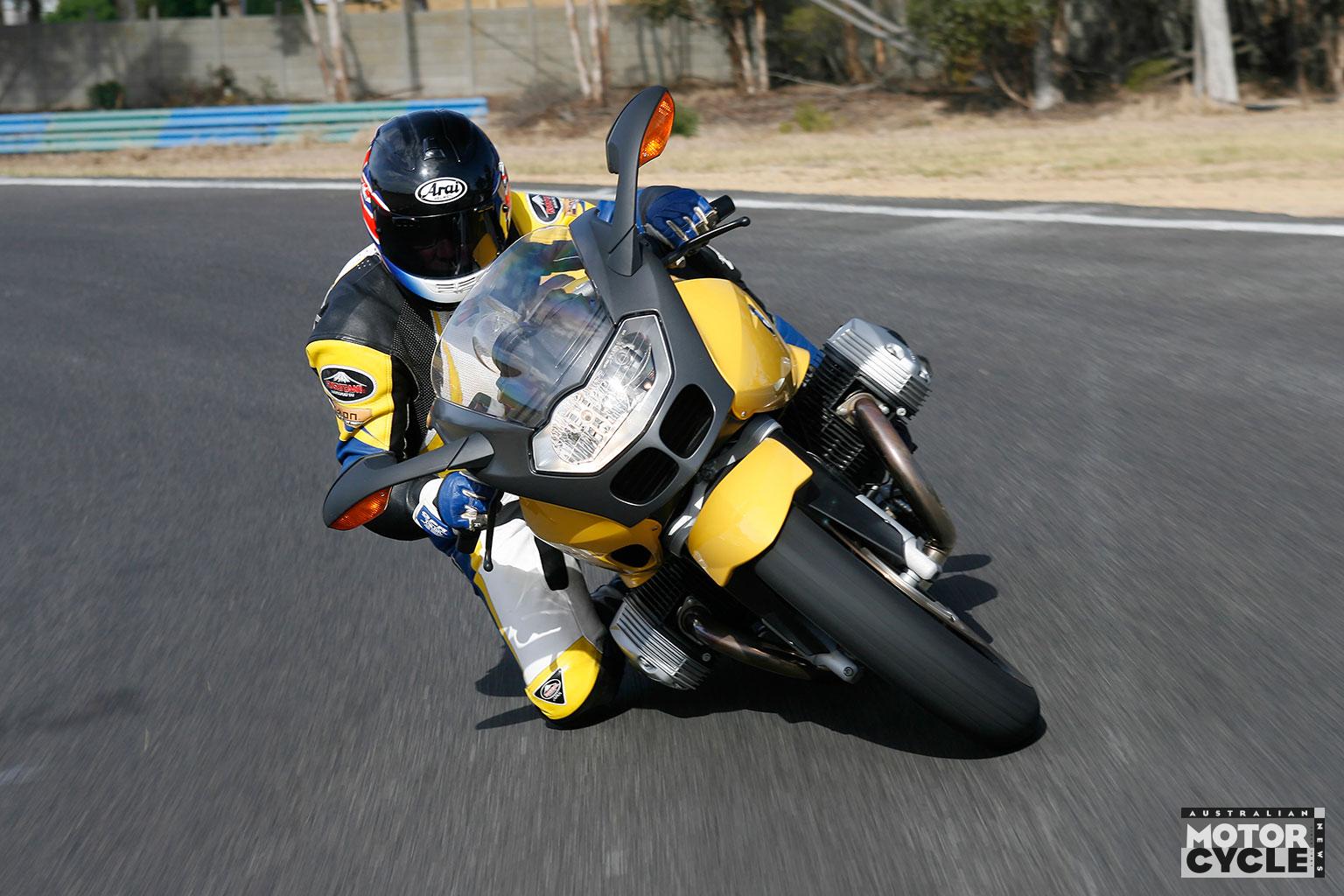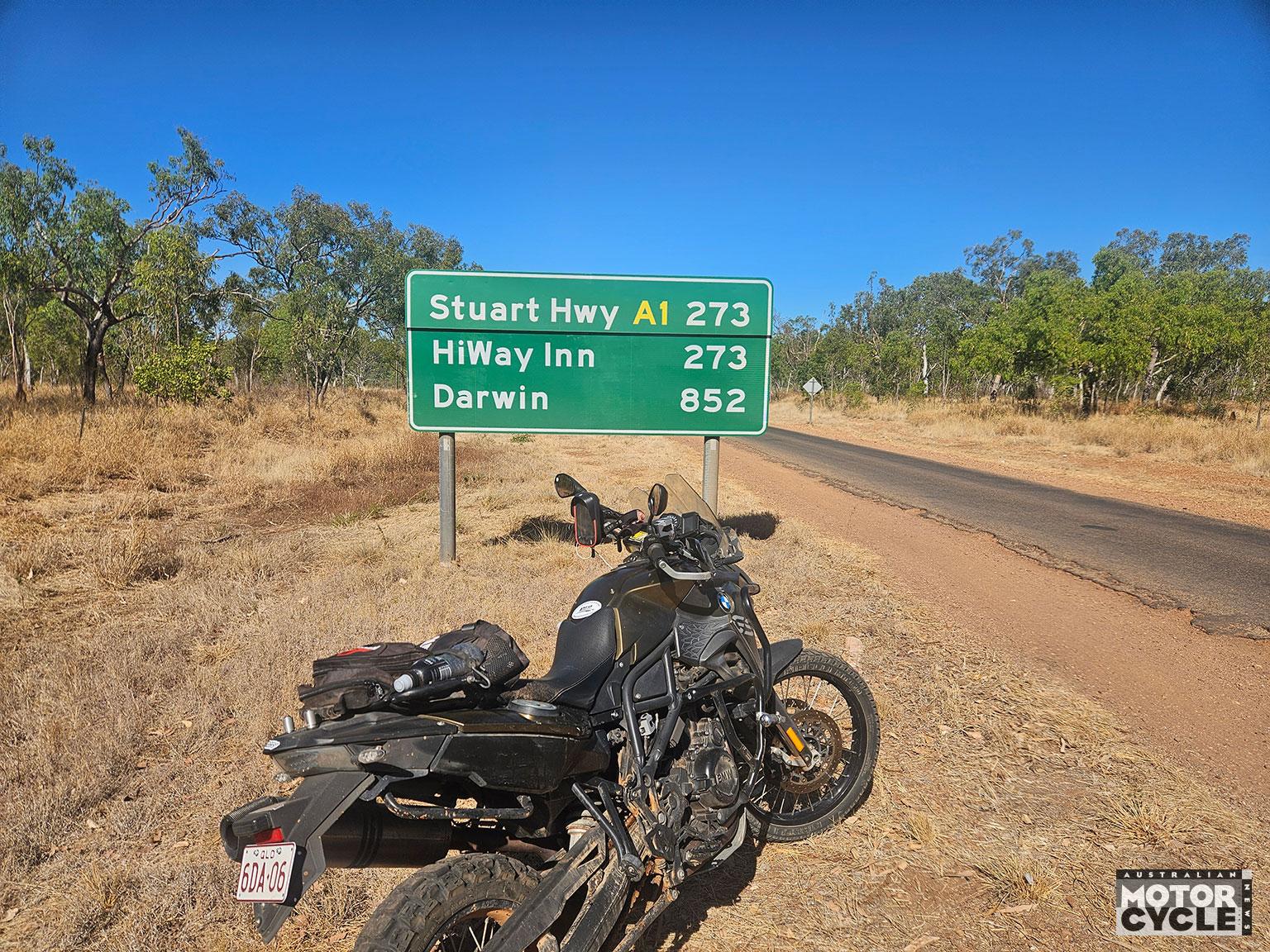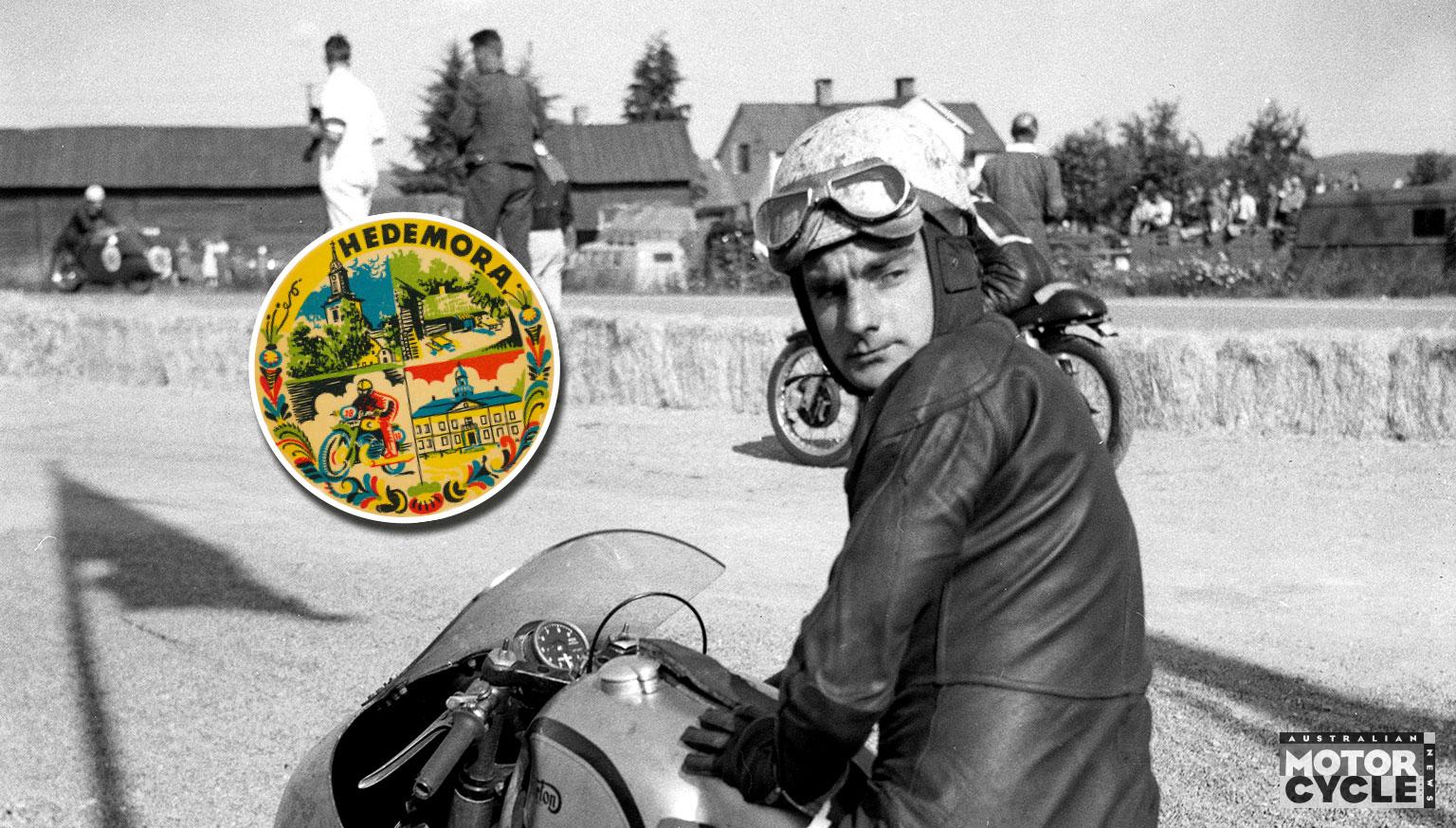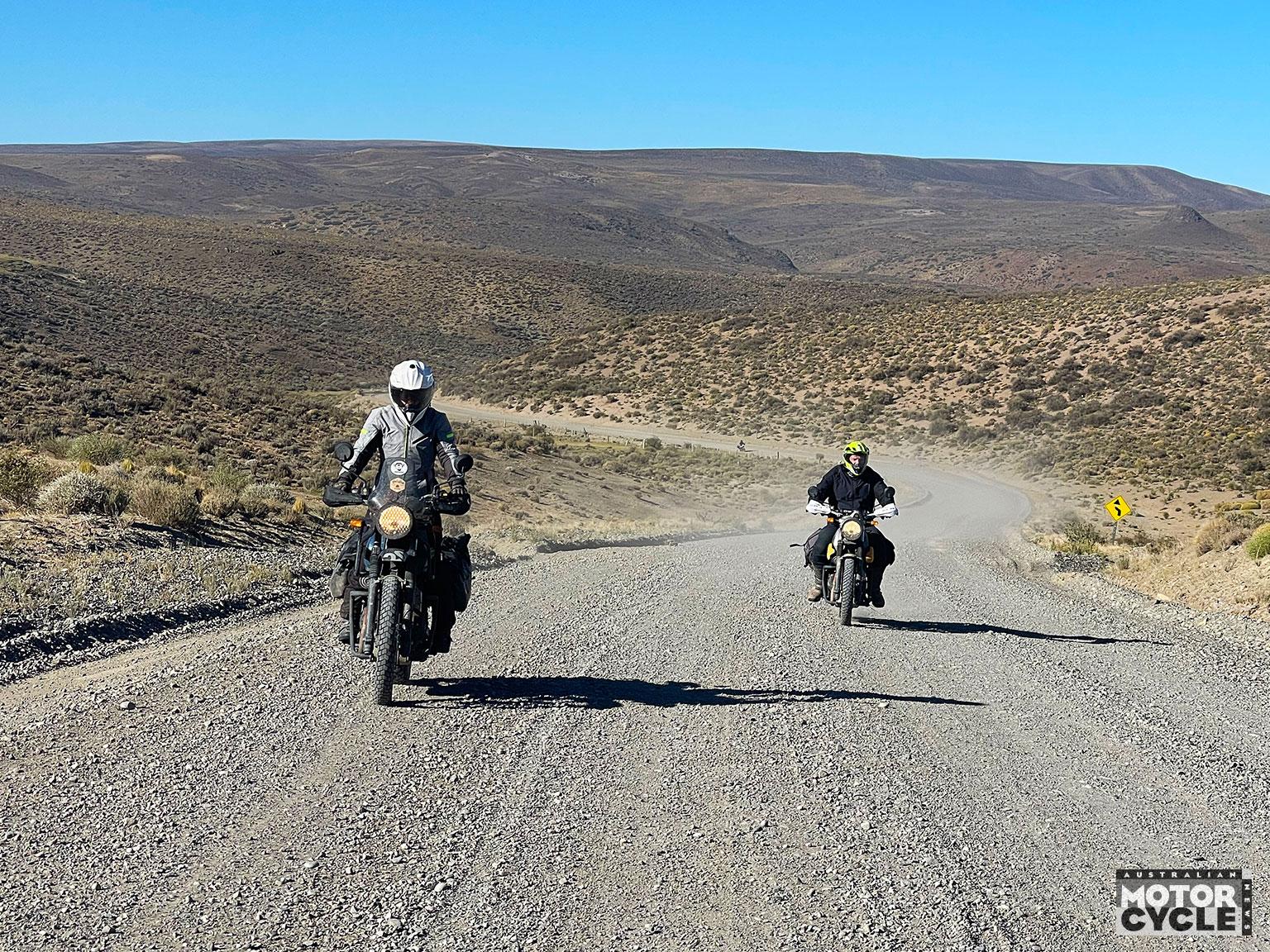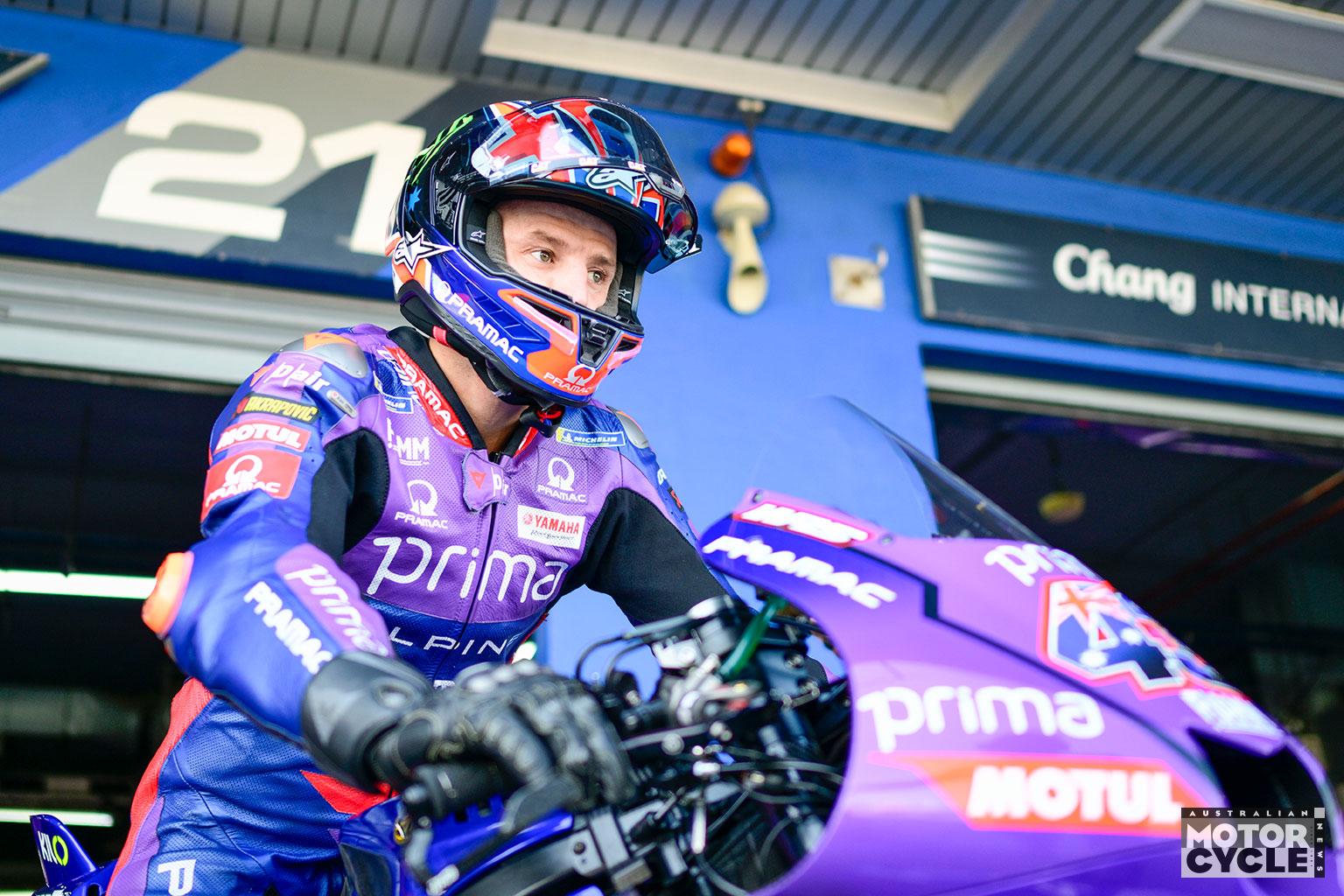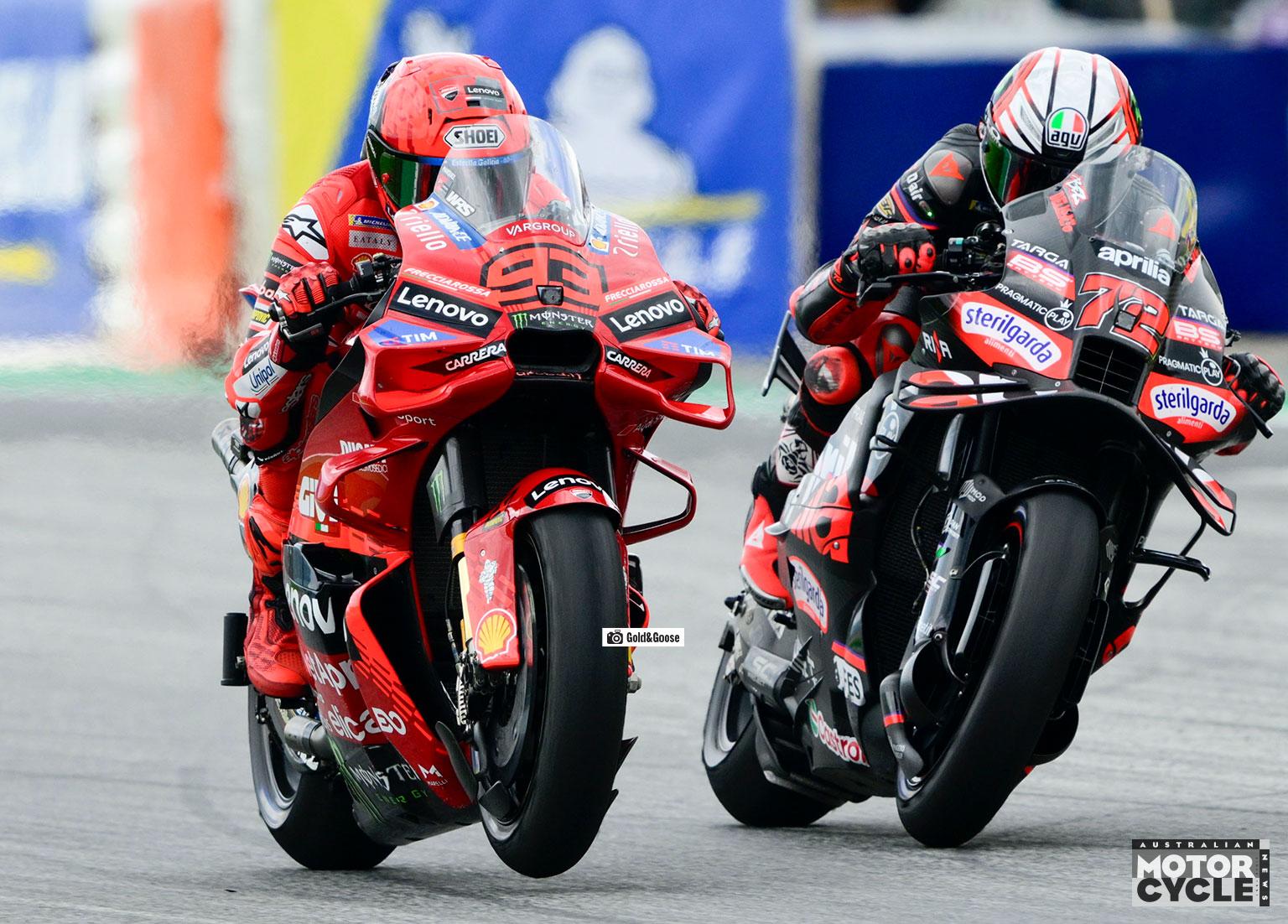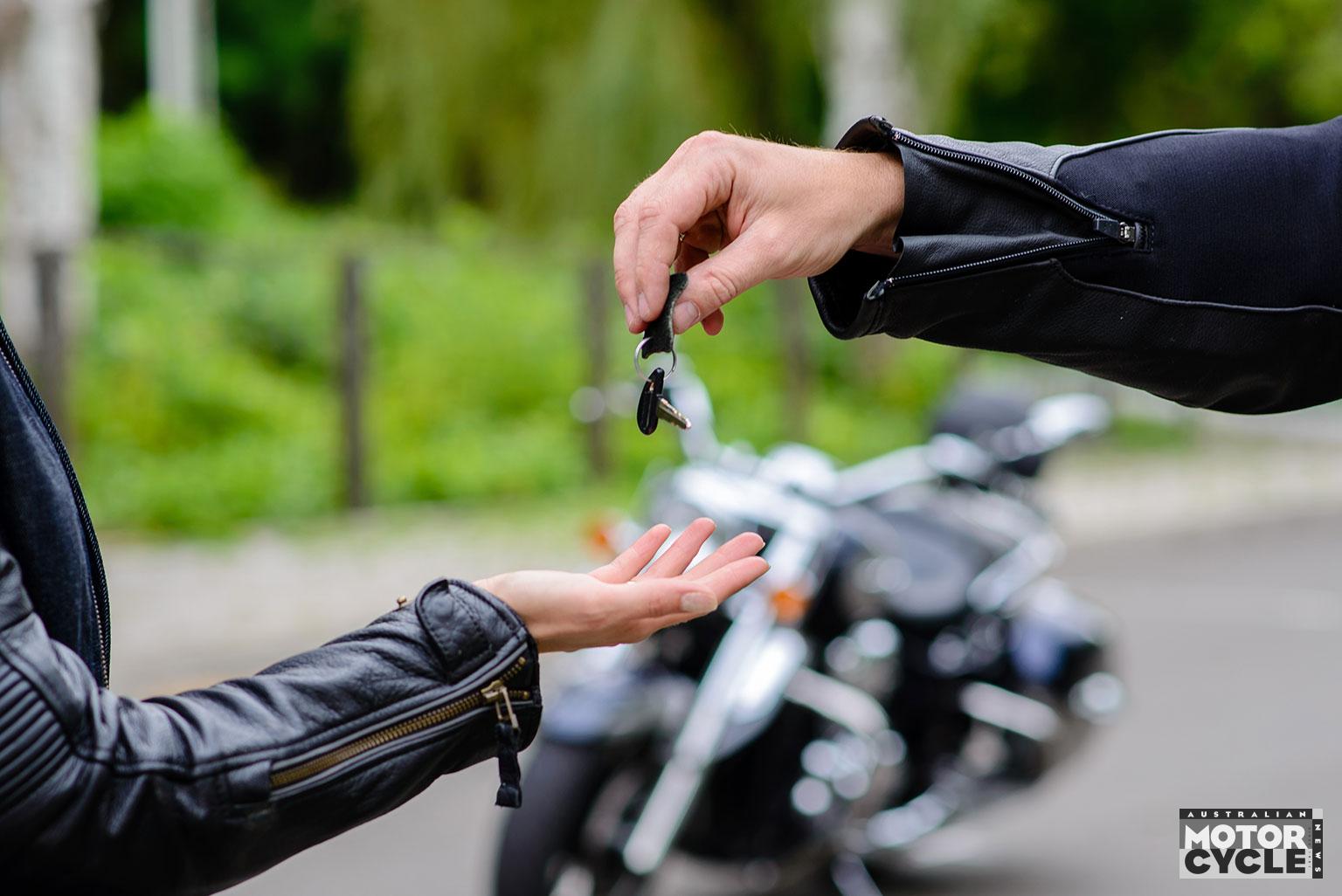Few rides evoke as much reverence as Mick Doohan’s famous NSR500. Replicating this iconic machine isn’t just a labour of love. It’s a masterclass in engineering.
Specials don’t come more exotic than this. The attention to detail on Jamie Seneviratne’s NSR500 replica is so exquisite, so convincing and so intertwined with Mick Doohan’s actual race bike that even on close inspection it’s hard to spot that this doppelganger wasn’t put together in HRC’s own workshop. Instead, it was made in a small, non-descript industrial unit on the outskirts of York, in northern England – the premises of GP replica builders 2Moto. “We make high-end toys,” grins Felix Hirzel, the brains and engineering genius behind 2Moto, “and this build is the closest we’ve achieved to the real thing.”
When Hirzel says ‘closest’ he’s not employing hyperbole. This bike’s carbon fibre fairing and self-supporting seat unit were created using genuine factory moulds – the ones that produced Doohan’s bodywork – by C-Tech Composites, the only firm outside Japan approved by HRC to make carbon fibre parts for BSB, WSB and GP Hondas.

The fuel tank is an exact replica of one from a works NSR500. Jamie persuaded a Swiss collector who owns Doohan’s ’93 bike to scan the tank. Hirzel used that info to create a 3D-printed model from which this tank was then fabricated. And the Repsol orange wheels – forged magnesium OZ – were sprayed alongside a batch destined for Marc Marquez’s MotoGP RCV Honda.
“It’s taken five years, many sleepless nights, a lot of trial and error, plus numerous complete one-eighties in terms of ideas and spec to reach this point,” says Jamie of the build. “I blame my nan. If she hadn’t given me a poster 28 years ago of Doohan on his Repsol NSR we wouldn’t be here now. That planted the seed for the whole idea.”
The memory of that poster and the impression it made on Jamie’s young mind way back in the ’90s was reignited on a trip to the 2018 Goodwood Festival of Speed. “Seeing a ’95 NSR500 up close lit a fire inside me. That was the bike I wanted, but obviously you can’t just go and buy a factory 500 – especially a Honda. Even Rossi doesn’t have his title-winning bike…”
But the phrase ‘you can’t do that’ doesn’t mean much to Jamie. His immediate reply is “why not?”. And it’s that attitude that has pushed, dragged and teased this project so close to the real thing.

MAKING DREAMS COME TRUE
“After the festival I started looking into how I could make my dream of owning an NSR a reality,” says Jamie. “Two names popped up: Mick Costin in Australia and Felix Hirzel in the UK. Both had impressive track records for building NSR replicas, but it made most sense to go with Felix, a) because of geography, and b) I’d seen one of his 500s featured in Practical Sportsbikes magazine. I knew he could make it happen.”
Jamie had already disregarded a modern Suter 500 on the grounds of cost, lack of availability, and because he wanted something that could be ridden on the road as well as the track.
“I spoke to Ronax too, about buying one of their V4 engines,” says Jamie. “But that wasn’t a goer – someone shouting ‘f… off’ in German down the phone to my request made that clear. How can you deal with people like that?”

Sourcing a factory NSR engine was even less likely, but that didn’t stop Jamie from trying. “I know a collector who’s got an ’89 ex-Lawson engine, but it’s lacking carbs, pipes, airbox and just about every ancillary component. And that’s before you’ve attempted to rebuild it with non-existent parts…”
Fortunately there are two, more attainable ways to four-cylinder two-stroke power: Suzuki’s RG500 or Yamaha’s RD500LC. The latter offers the desired V4 layout, but Hirzel favours the square-four Gamma for these NSR builds. “They’re more compact and tuneable than the Yamaha. Jamie suggested a Swissauto V4 engine at one point. We got as far as talking about flip-engineering it – it’s a sidecar engine and runs its chain on the right, so we would have had to reengineer it to the left side. But it quickly became clear that it wasn’t financially viable.”
Although an RG engine betrays the logo on the tank, Hirzel has fettled it to provide the spirit of a GP two-stroke in keeping with its inspiration. It’s now 570cc and makes 94kW (126hp) at the rear wheel, which is strong for a 35-year-old square-four, although it’s some way short of the 127kW (170hp) of a factory NSR. That said, with a mere 122kg dry to propel (around 130kg when juiced) Jamie’s stroker boasts a one-to-one power-to-weight ratio.

As well as perfecting the port timing and fuelling (through four 35mm Mikuni TMX carbs), Hirzel manufactured a bespoke control unit for the powervalves, which weren’t initially compatible with the programmable Ignitech ignition. “I can now control when and at what speed the powervalves open, for a broader, smoother spread of power. Previously they’d just open and shut fully at the same point, regardless of throttle opening.”
Hirzel also created the generator, loom, carbon airboxes and billet clutch casing from scratch, the latter being as near a replica of the NSR’s as possible, right down to its embossed HRC logo. A hydraulically operated dry clutch (another 2Moto part) and race-spec Nova gearbox complete the transmission.
But for Jamie, this build is as much about aesthetic correctness and scale as it is about bite-the-back-of-your-head gorgeous engineering.
“The exhausts had to be right,” he says, pointing at the titanium spannies, exquisitely welded by Sean Ryde, dad of 2024 BSB champion Kyle. “The RG’s front cylinders sit at a markedly different angle to the NSR’s, so the pipes had to be designed for maximum performance as well as mimicking the length and look of the Honda’s. If we hadn’t got it right, it would have really bugged me.”

Much like the swingarm. Hirzel’s earlier NSR replicas featured Yamaha R6 rear ends, on the grounds that they looked pretty good and they worked in terms of dimensions. But a trip to the boozer changed all that for Jamie. “I was having a pint or two one night when I phoned Felix to ask if he could make a replica of Doohan’s bike’s swingarm, because to me the R6 ’arm didn’t look right. He thought it’d be a lot of hassle for not a lot of gain, but I insisted and I’m glad I did because it’s four kilos lighter and it really lifts the bike from a run-of-the mill special to something that could be factory.”
But it’s the front end that really sets this bike apart from all other NSR replicas. Not satisfied with the steel discs and Öhlins fork from a Ducati 1098 that first graced his bike, Jamie set his heart on what a pukka NSR would wear.
“Öhlins are great forks,” explains Jamie of his need to match Mick, “but they just didn’t look right. For starters, NSRs didn’t run radially-mounted calipers. Buying a set of factory Showa forks was out of the question. Even if I could find a pair they’d be ludicrous money, so instead Felix made these, starting with a pair of R1 forks then basically replacing or reengineering every component. It took months just to find someone who could cerakote the bottoms the right colour…”

You’ll no doubt have noticed the discs, too. Steels simply wouldn’t do, and nor would racing carbon items, given that they’d never get up to working temperature on the road. Instead, Jamie hunted high and low for a solution.
“Eventually I found Sicom, a little-known firm who supply Brembo with carbon discs for MotoGP and F1. After much persuasion they agreed to make me a pair of composite discs that look like carbon but work from cold. I also talked Brembo into making me a pair of period-correct calipers.”
As gorgeous and complicated as the front end is, it only scratches the surface of what’s gone into building this bike. Everything from the instruments, triple clamps, screen, bars, footpegs, shock linkages, ingenious push-button electric choke system, twin radiators and more has been either CAD designed, 3D-printed or handmade (and often all three) by 2Moto. It is quite simply metal made art, that only the genuinely clued-up would spot as a replica.
Jamie is coy when it comes to cost, and the price of a 2Moto NSR replica depends entirely on what spec you choose. “Put it this way,” he says, “if you’re going to build one, think of a large figure – then treble it.”

THE RIDE OF MY LIFE
“It gives me shivers when it starts up,” grins Jamie, somewhat nervously. “It sounds angry, just like a proper GP bike, and that’s how it should be. Doohan used to say that the sound of his NSR warming up before a session was often enough to instil fear in him.”
I can relate to that feeling, as I ready myself to ride Jamie’s NSR on the fast, flowing roads around Lincolnshire’s Cadwell Park. Although this bike is road legal, the word ‘barely’ should prefix that notion. While it’s daytime-usage compliant, there are no lights, indicators, mirrors or key. Hell, there’s not even a kickstarter. Firing this beast into life is a job for starting rollers, especially from cold, but it will bump once warm, Jamie assures me. He did say he wanted it as close to Mick’s as possible…
Hirzel warms the stage-three-tuned RG500 engine with rhythmic bursts of throttle – each blip incites a vicious crackle and a puff of sweet, white fumes from the four carbon silencers. Jamie talks me through what I need to know. “It’s a race pattern ’box – down for up. There’s no rear brake pedal; it’s a thumb lever under the left ’bar. Oh, and you’ll need to thrash it. It doesn’t like slow; it gets choked up.” Roger that.
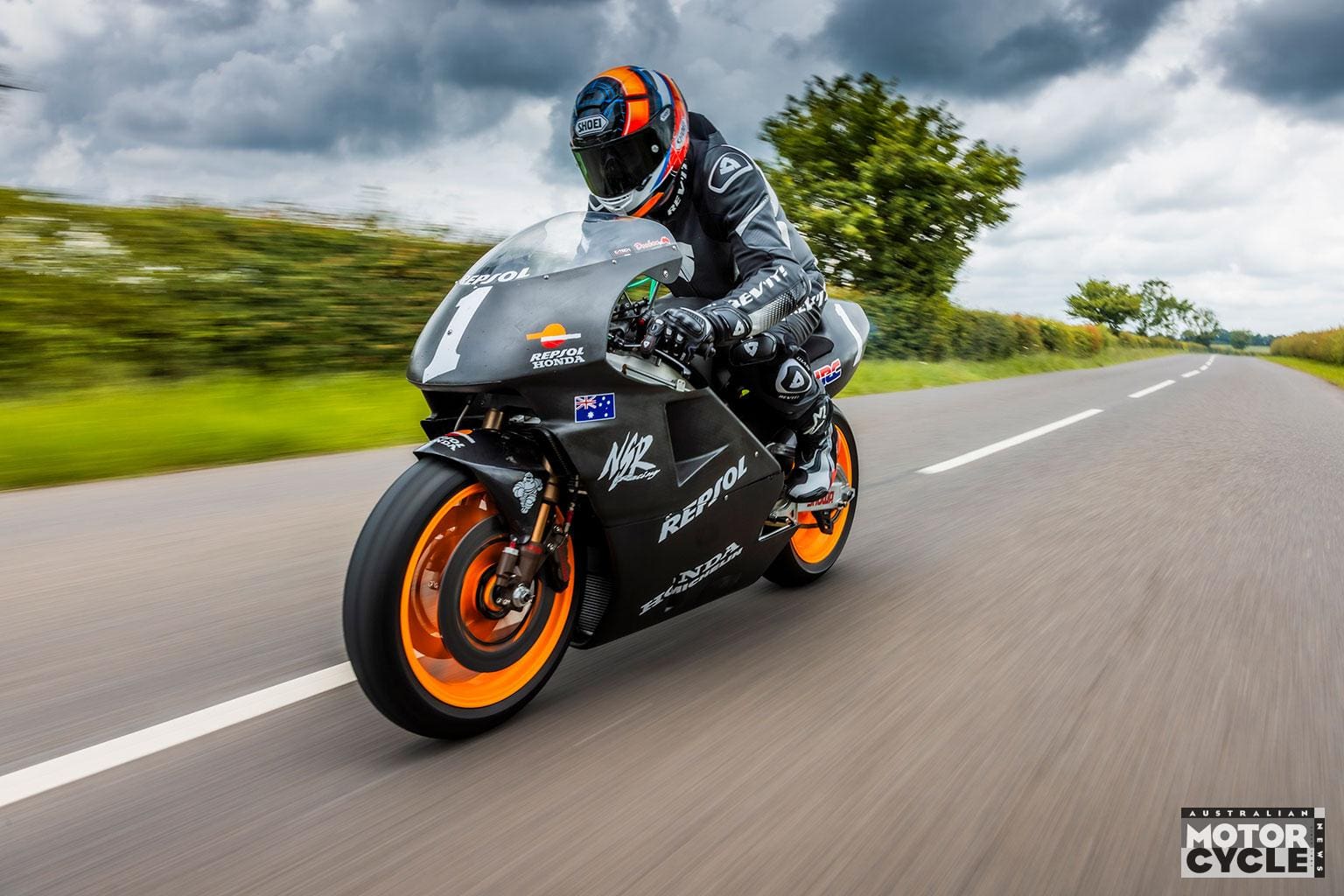
Turning left out of Cadwell onto the A153, I immediately feel like a magnet for every traffic cop in the county. The only indication that I haven’t taken to His Majesty’s highway on a full-on race tool is the tiny numberplate tucked under the top spannies. And the lack of mirrors is already making me nervous. For the first few miles I familiarise myself with my surroundings and get used to the feel of this HRC rep before letting it off the leash.
I was expecting torturous ergonomics; after all the chassis apes the dimensions of a pukka ROC Yamaha GP bike. But it’s no more extreme than any current superbike, and there’s room aplenty to shuffle back and forth along the seat. Getting comfy isn’t an issue.
Holding on might be, though. Foremost in my mind are the numbers this thing makes: 130bhp at the rear wheel. Not much by today’s standards, but that’s a genuine 260bhp per litre – 51bhp more than a BMW M 1000 RR. And there’s no traction control, riding modes or anti-wheelie to tame delivery. Only my right wrist can do that. Indeed, the only electronic aid on offer is a quickshifter for the close-ratio gearbox.

Power is only half of the story. The 130bhp available to my right hand propels a mere 122kg; that’s dry weight minus a battery. Even juiced it’s barely more than 130kg. Aprilia’s RS125 tips the scales at 126kg… So, we’re talking a huge amount of unfiltered power coupled with the mass of a learner bike. A match made in heaven, right?
As I wind on a full helping of gas for the first time the answer is an unequivocal “hell, yeah”. The tacho needle races from 8000rpm to the 11,500rpm redline in the blink of an eye. Third, fourth and fifth gears are selected in rapid succession, my foot prodding the gear lever each time the shift light flashes in my peripheral vision. Up ahead is a glorious stretch snaking downhill in a fast left-right before morphing into a double-lipped incline that then arcs right onto a long undulating straight. I’d expected the NSR to be twitchy, even slappy over such challenging topography, but instead it changes direction with the lightest tweak in pressure through the ’pegs, all the time holding a stoic groove that begs more throttle.
It’s a complete assault on the senses, but in the best way possible. Having shifted back to third for the flip-flop and incline, we’re now aimed at the straight. Full gas again and the NSR lofts its front wheel over every slight rise – staying airborne 3cm or so above the tarmac between two of the crests. All the while I’m banging in gears – fourth-fifth-sixth – chest on the tank and head bobbing about just above the screen as we make for the end of the straight in a screaming 10,000rpm-plus wail.

The performance potential – both engine and chassis – is so large and intense that it’s a struggle to take it all in. What surprises most, however, is not the ferocity and sheer intensity of acceleration, the lightness of input required to turn, or even the quality of damping as this lightweight missile skims over the road surface at blistering speed, but just how beautifully it rides. There’s an abundance of potent drive throughout the rev range. Things get really busy above 8000rpm, but Hirzel has tweaked all four Mikuni TMX53s to fuel so crisply and efficiently that this Honda wannabee is just as happy burbling through town as it is baring its teeth on open tarmac. On quieter roads away from town and traffic I get the chance to properly hustle the 500 through tight S-bends and 90-degree turns.
The potential of the chassis is way beyond anything I can even begin to scratch on the road. It’d murder a contemporary superbike in corners, so rapid and effortless is its change of direction.

Corner exits bring an undeniable urge to haunch over the front end, Doohan style, to keep the front wheel from launching skyward. Soon I’m climbing all over the thing, lost in a 500GP fantasy, blipping the throttle on down-changes and teasing the rear thumb brake mid-turn. Oh, and those front brakes. Holy moly. Any concerns I harboured about ceramic brakes not working on the road were brushed aside the first time I pulled the lever. An explosion of feel, feedback and astonishing power through a one-finger touch. ABS? Pah! Who needs that? Smearing the front Pirelli Diablo Corsa into the tarmac is all part of the experience.
In building this, the ultimate race replica, Jamie and Felix have unintentionally created the perfect sports bike, or at least in part.
Ignore the lack of lights, sidestand (Jamie has to carry that with him), and rampant thirst for premix – this thing handles, turns, brakes and excites in a way even exotica like BMW’s M 1000 RR fails to touch.
If Doohan’s HRC Honda was the ultimate 500 GP bike, then Jamie’s tribute is easily the best roadgoing 2T ever built. We’re sure even Mighty Mick himself would approve.
PROS – It’s hard to comprehend how this ultimate GP bitza can work so well on a normal road
CONS – Very expensive and very little opportunity to ride it the way the maker intended
I WANT ONE…

Of course you do, but you’ll have to be patient. Felix Hirzel is a one-man band and his order book is chocka for the next two years building Yamaha 500LC YZR500 replicas, his other speciality. But if you’re serious, drop him a line at info@2moto.co.uk or go to 2moto.co.uk to get more insight into his work.
SPECIFICATIONS

ENGINE
Type Liquid-cooled, square-four, disc-valve two-stroke (RG500), Stage-3 tune
Capacity 570cc
Bore x stroke 60mm x 50.6mm
Carburation 4 x Mikuni TMX35, one-off carbon airboxes/inlets
Transmission 6-speed Nova gearbox, multiplate dry clutch
Power (measured) 94kW (126hp) @11,000rpm
Torque measured) 81.5Nm @10,000rpm
CHASSIS
Frame 2Moto aluminium beam; box-section aluminium swingarm to NSR500 dimensions
Front suspension One-off replica Showa fork, K-Tech internals, adjustable preload, compression and rebound damping
Rear suspension Öhlins TTX shock, adjustable preload, compression and rebound damping
Brakes Front – Twin 320mm ceramic discs, Brembo X10.14.40/4 monobloc calipers. Rear – 200mm disc, Brembo caliper
Wheels OZ forged magnesium
Tyres Front 120/70 ZR17 Rear 180/55 ZR17 Pirelli Diablo Supercorsa
Rake/trail 23°/85mm
Wheelbase 1375mm
Weight 122kg (dry minus battery)
Seat height 820mm
Tank size 26L
